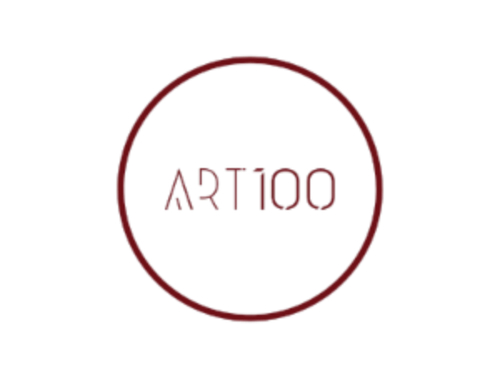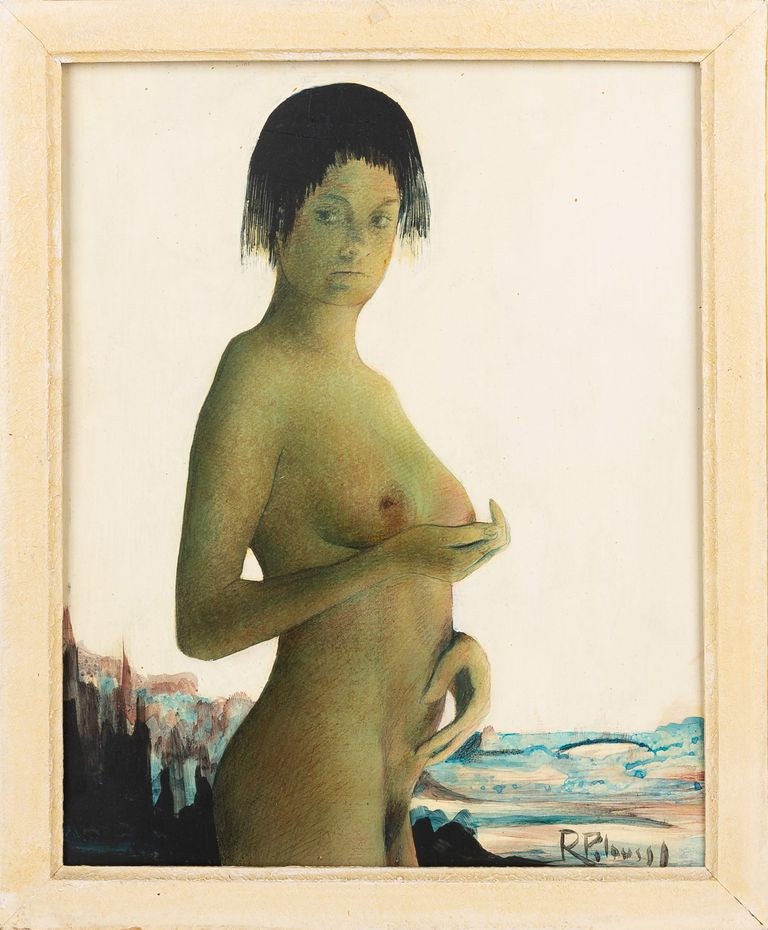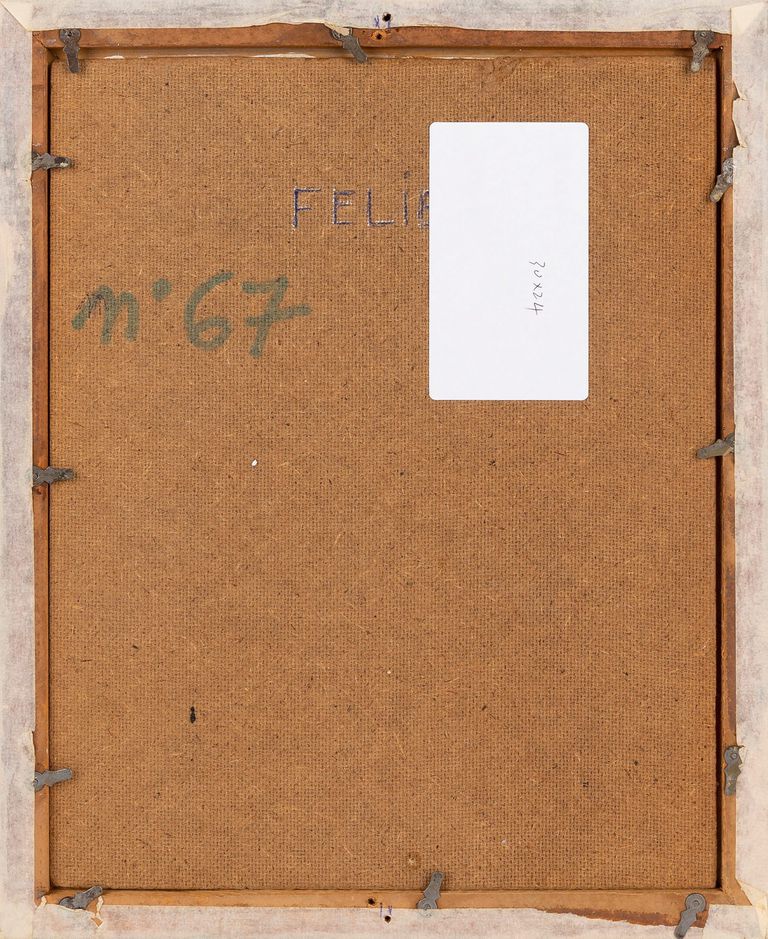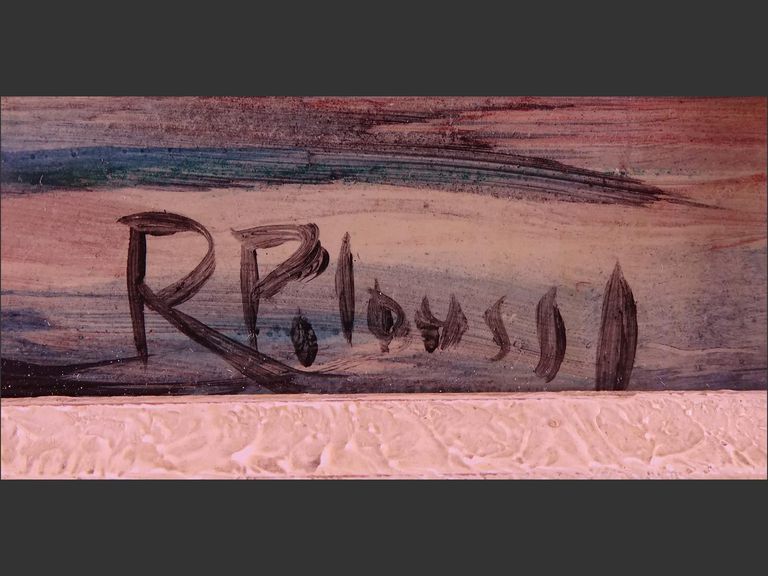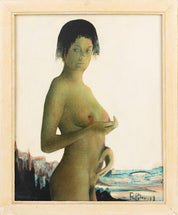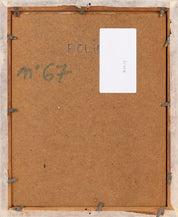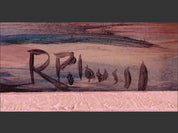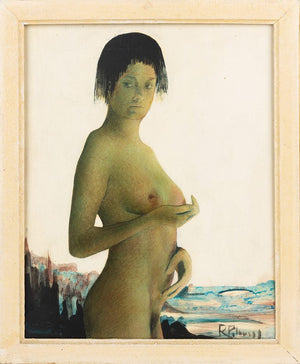René Pelousse, Female nude
René Pelousse
Artwork Details
Artwork Description
This exquisite piece unveils the depiction of a female nude, artfully positioned in a semi-profile angle, her face turned toward the viewer, her gaze seemingly fixed somewhere beyond the frame. The background, minimalist in nature, offers only a subtle suggestion of a landscape in the lower portion of the composition. The artist's choice of ink and watercolor mediums brings forth intriguing textures on the model's skin, creating a unique and delicate skin tone that forms a complementary contrast with the subtle interplay of faded green and red hues within the main element of the composition. This distinctive chromatic approach effectively sets the figure apart from the background, endowing it with a commanding visual presence. The rendering of this artwork possesses both graphic and painterly qualities, resulting in a visually complex and engaging composition.
Details:
Artist: René Pelousse
Title: Female Nude
Medium: Mixed Media (Watercolor and Ink)
Dimensions: 30 x 24 cm
Condition Report: Overall, the artwork is in good condition.
Signature: Located in the lower right corner.
About the artist:
René Pelousse was a notable visual artist, born in 1917 and passing away in 1977. He was part of a generation of artists that included Stanley Meltzoff, Noël Gloesner, Maya Deren, Du Songqin, and Hanna Modrzewska-Nowosielska.
René Pelousse's artistic career unfolded during the 1930s, a period marked by the convergence of various political ideologies, including Marxist Socialism, Capitalist Democracy, and the Totalitarianism of both Communism and Fascism. Surrealism continued to exert a significant influence in Europe and globally. Artists such as Frida Kahlo and Diego Rivera in Mexico were inspired by Surrealism while incorporating it into their revolutionary political philosophies, giving rise to a unique form of magic realism.
The 1930s in the United States were profoundly shaped by the Great Depression. Many artists turned their attention to themes of modesty and the everyday person. It was during this time that artists began to engage with political subjects and used their art as a means to influence society. Issues like poverty, affordable housing shortages, anti-lynching movements, anti-fascism, and workers' strikes became prominent themes in the art of the era.
Internationally, the 1930s also saw significant developments. In the Soviet Union, rapid industrialization was underway as part of the first Five Year Plan, necessitating the sale of valuable artworks from the State Hermitage Museum in Leningrad (now St. Petersburg). These artworks made their way to the United States, with some finding a home in the collection of Andrew Mellon.
However, this decade took a dark turn with the rise of National Socialism in Germany and Adolf Hitler's ascent to power in 1933. By the decade's close, the Second World War had erupted, overshadowing the arts and society as a whole.
